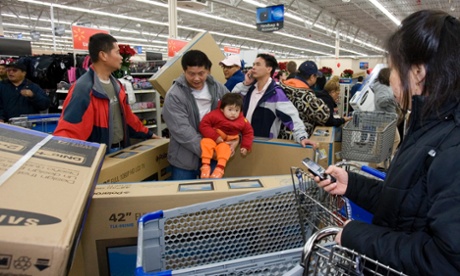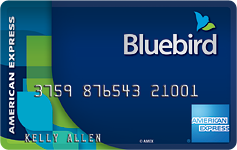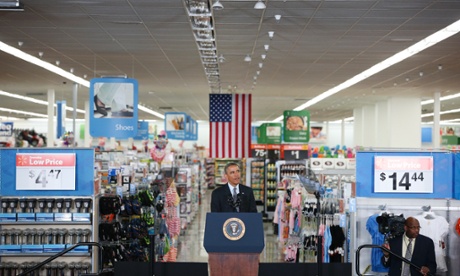Franchising, retail, business

25/09/2014
Walmart wants to get low-income people into its stores by offering checking accounts. It’s made an enemy of banks, who want the retail giant off their turf
Credit unions prosper as banks turn their backs on more Americans
Americans don’t trust bankers, and bankers don’t trust Walmart.
America’s biggest retailer has always wanted to be something else: a player in the financial industry. Bankers, their antennae alert to competition, have assiduously tried to block the superstore from getting a federal bank charter for the past five years. Walmart has dodged its rivals by entering through backdoors: pre-paid cards and, earlier this year, money transfers.
Now Walmart has grabbed the brass ring: it announced on Wednesday that by the end of October it will begin offering low-cost checking accounts to customers.
“Morphing into a bank has been an obsession of Walmart’s, right up there with trying to open a store in New York City,” says Brian Sozzi, CEO and chief equities strategist of Belus Capital Advisors.
Walmart’s hard-won progress has come through partnerships, with American Express for its BlueBird pre-paid cards and with Green Dot for the money transfers and checking accounts. 
In 2012, Walmart and American Express introduced Bluebird.
These are also not customers that banks have shown any willingness to fight for, and which banks really want. Walmart has suffered a catastrophic exodus of lower income Americans ever since cuts to food stamps took place at the end of 2013. By offering low-cost banking, the retailer can hope to give them a reason to drop by the superstores.
“The digital only, non-branch Bank of Walmart serves three functions. First, it gets the unbanked, low-income household into a Walmart store. Right now, that unbanked customer is walking or using public transportation to buy groceries and staples from Family Dollar, Dollar Tree, or Dollar General,” said Sozzi.
“Second, it gives Walmart access to customer information,” he said. “Walmart thrives on data. By having more insight into the finances of its customer base, and when they are shopping, Walmart could make for more productive use of one its largest assets: its inventory.
“And finally, it gives the company a new platform to market across TV, social media, and its website.”
The only question is whether it will work. Even if bankers grouse, low-income consumers are likely to find a Walmart account appealing. Customers just have to be older than 18 and willing to pass a rapid ID check. The accounts will have no overdraft or bounced check fees, nor do they require a minimum bank balance. There is one catch: if customers don’t deposit at least $500 a month, there will be a monthly $8.95 fee.
The timing of Walmart’s announcement comes as the unbanked population in the US is prime for picking.
More than quarter of US households, at 28.3%, is unbanked. Credit unions have recently reached a record 100 members members. 
Walmart is one of the few American retailers that has had the president give a speech between its aisles. Here, President Obama at a Walmart on May 9.
Now Walmart just has to keep fending off its rivals, including community banks, credit unions, and large banks who don’t want another competitor.
“In terms of why traditional banks hate Walmart’s advances onto their turf: any account opened with the word’s largest retailer is an account that may be closed with them, or not opened at all,” says Sozzi. “Bye-bye overdraft fees, among many others.”
The Federal Advisory Council is a banking advocacy group that advises the Federal Reserve and consists of some of the highest ranking bankers in the US. The council advised the Fed that Walmart should submit to the same regulatory scrutiny as other financial institutions.
“Walmart has sought to enter banking formally for over a decade. Faced with opposition, Walmart now appears to have entered banking through the back door, without the regulatory framework that applies to banks,” council members told the Fed in December 2012, around two months after Walmart introduced its Bluebird prepaid card.
“Regulators should ensure that there is a level playing field for all financial intermediaries to make sure that risks are properly monitored and regulated.”
Their efforts to get regulators to consider Walmart as the equivalent of a regular bank have been repeatedly thwarted by regulators.
In 2011, other banks appealed to Consumer Financial Protection Bureau, CFPB, to designate Walmart as “large participant” in financial services, which would require the retailer to fall under the agency’s direct supervision
The CFPB deflected by refusing to weigh in on the Walmart matter.
The issue still rankles with many bankers.
“With this new partnership, it begs the question of Walmart’s role in the financial services sector, whether the CFPB should explore ensuring Walmart is responsibly serving consumers in the financial services arena,” says Richard Hunt, president and CEO of the Consumer Bankers Association.
The CFPB did not respond to requests for comment.
The bankers have more fights on their hands. Walmart is not the only company looking to get into the banking. Earlier this month, Apple introduced Apple Pay, which would enable those with iPhone 6 to make purchases with their device.
Even though Apple Pay targets those with enough funds to afford the latest version of iPhone and Walmart’s plan is designed to attract the lower income Americans, Walmart also doesn’t like competition. The retailer said it won’t allow Apple Pay to be used at its stores.
By:http://www.theguardian.com/money/us-money-blog/2014/sep/25/walmart-banks-checking-accounts